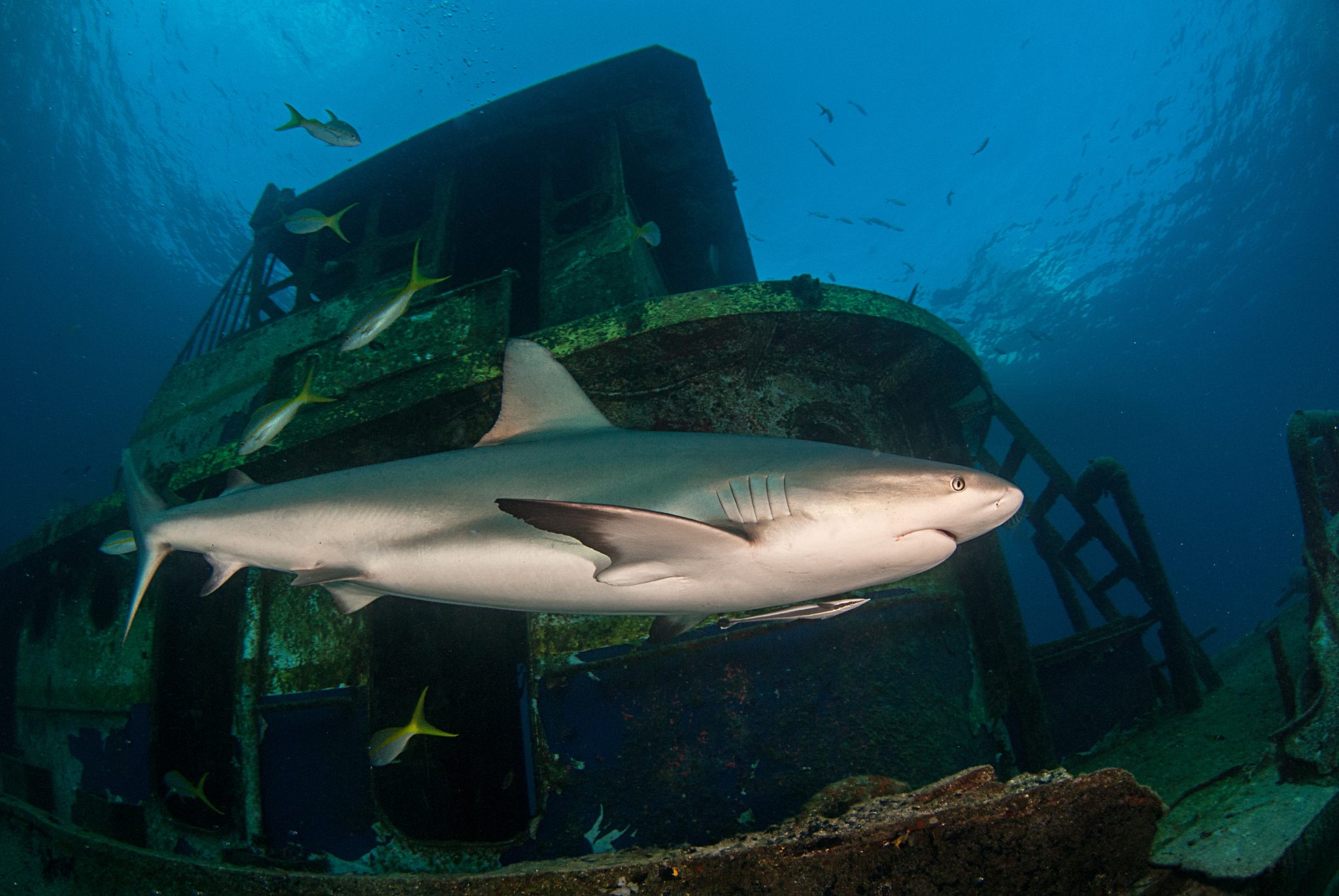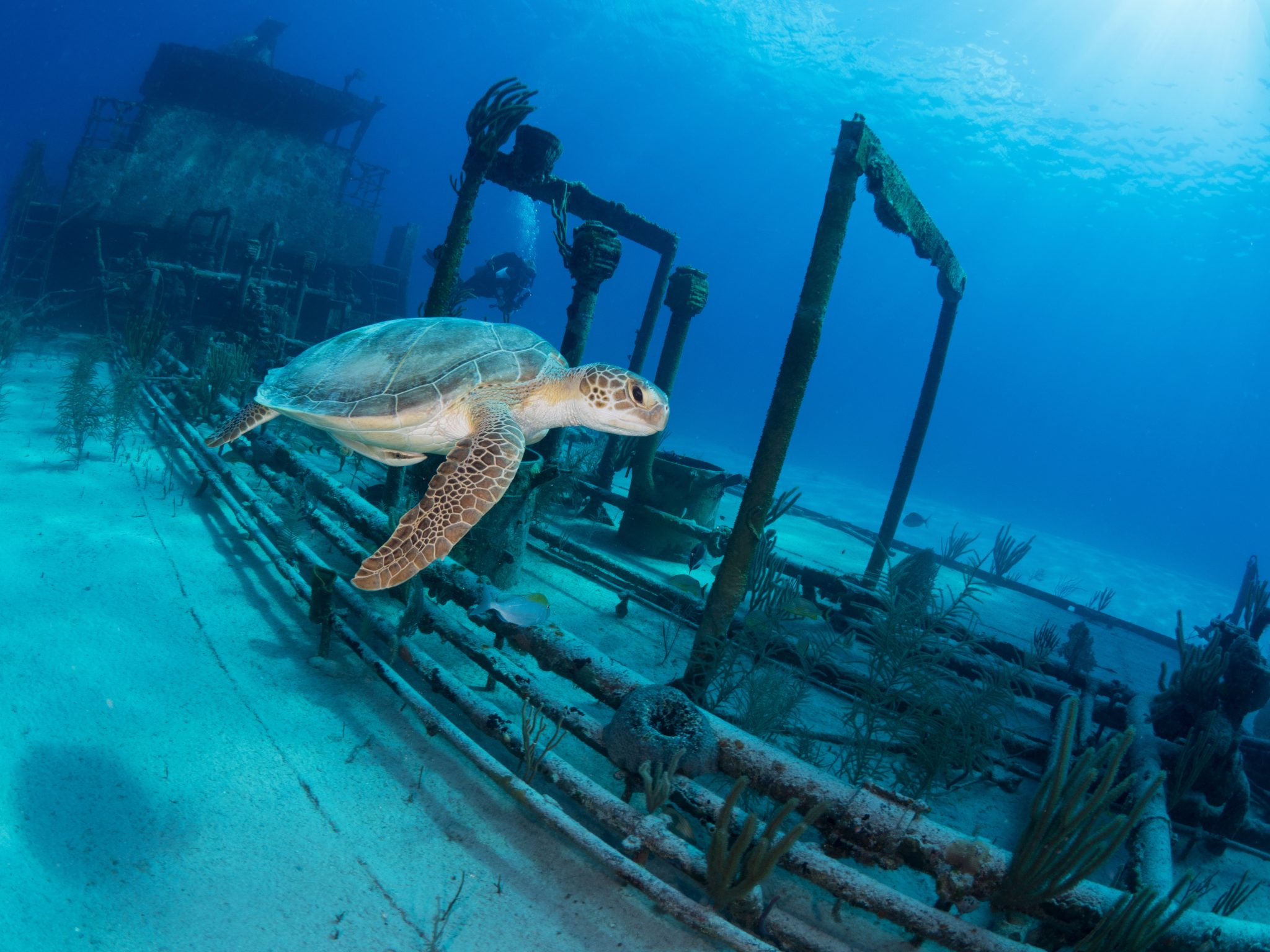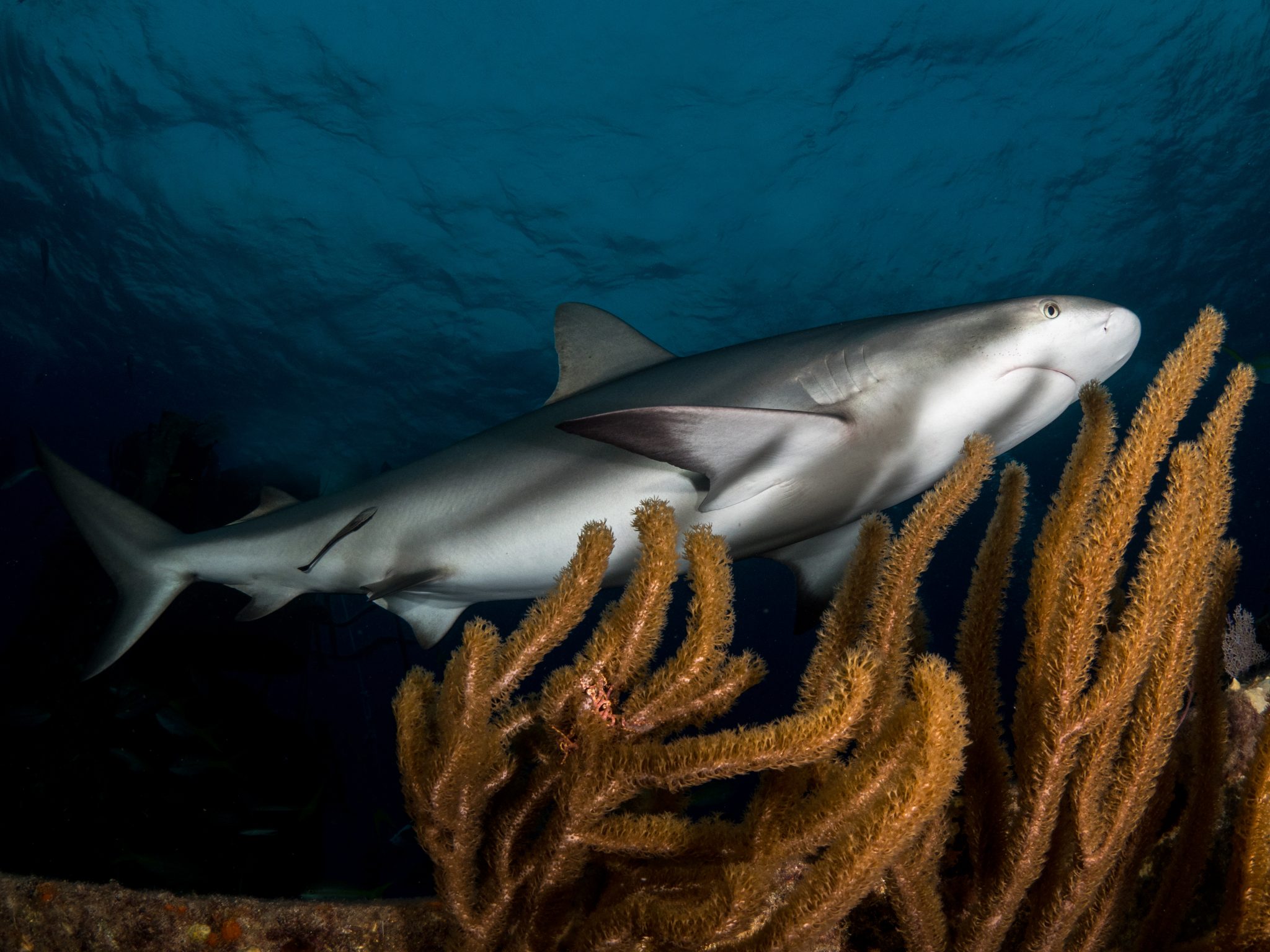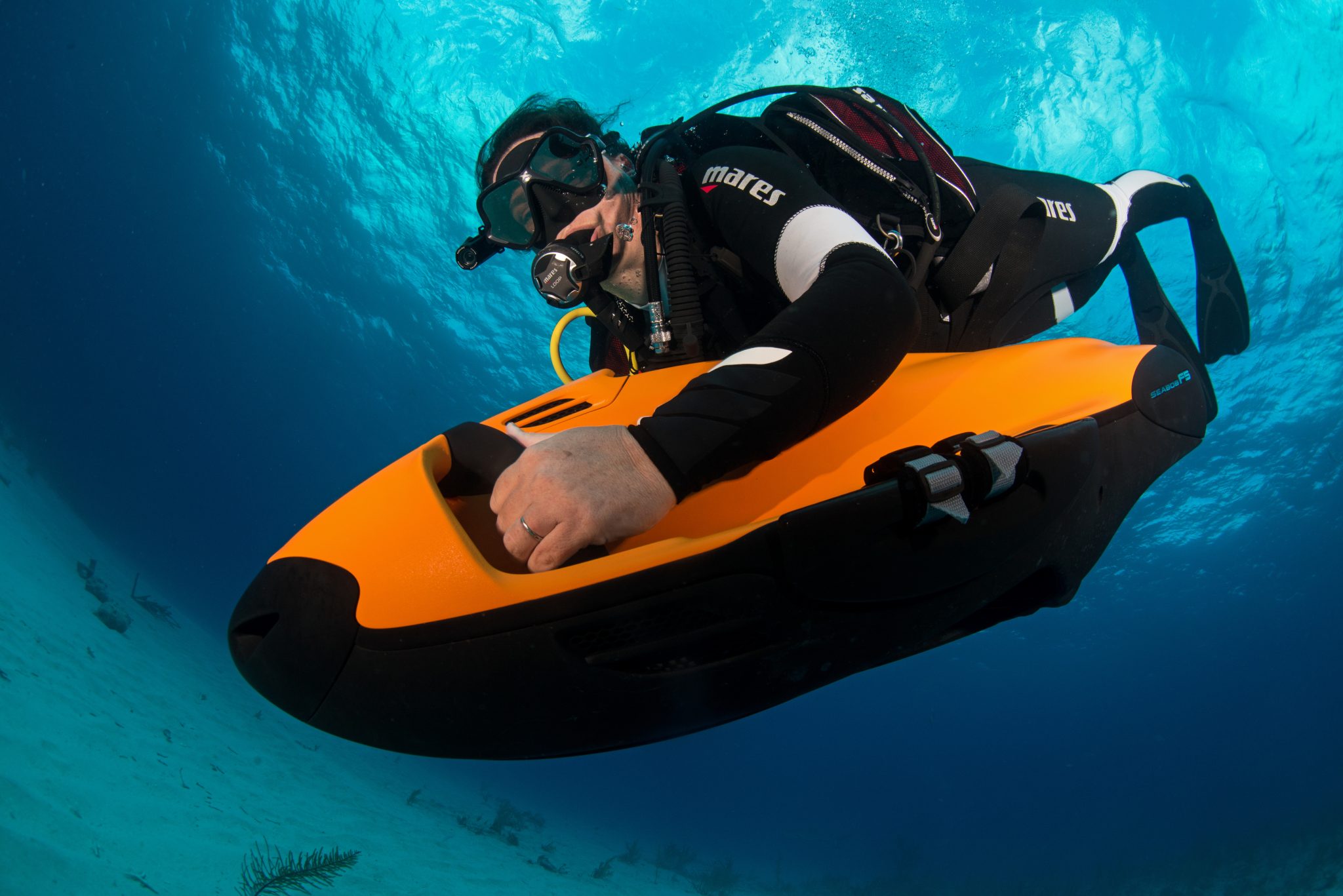

Overview
Fact File
| Capital | Nassau |
| Population | 310,500 |
| Languages | English, Creole |
| Time | GMT -5 |
| International Dialling Code | +242 |
| Currency | Bahamian Dollar (BS$), US dollars widely accepted
|
| Tourist Board | |
| International Airports | Grand Bahama International Airport (FPO) on Grand Bahama Island, and Lynden Pindling International Airport (NAS) on New Providence. |
About The Diving
There is something for everyone in The Bahamas, with vibrant reefs, plenty of shipwrecks, caverns & caves, and, of course, shark diving. The clear, blue, warm waters are enticing, and each island offers divers a unique experience. Freedivers and snorkellers will also not be disappointed, with deep blue holes and underwater attractions such as the swimming pigs of Exuma, wild dolphins in Bimini and the Sir Nicholas Nuttall Coral Reef Sculpture Garden off Nassau.
Many of the islands also specialize in a particular shark diving experience, with Tiger Sharks off the West End of Grand Bahama, Caribbean Reef Sharks in Nassua, Oceanic Whitetip Sharks off Cat Island, Nurse Sharks in The Exumas and Great Hammerhead Sharks in Bimini.
Sharks are protected in The Bahamas, with the Shark Sanctuary ensuring that sharks may not be hunted for their meat or fins in the whole country. Understanding that sharks are more important both ecologically and for the tourist money they attract has ensured that the islands have some of the healthiest reefs and best shark diving the Caribbean has to offer.
Most of the diving in The Bahamas is only a few minutes offshore, so you can tailor your diving day to suit your enthusiasm, just doing a couple of morning dives and then relaxing and exploring in the afternoon and evening, or squeezing in as many as 4 dives in the day and a night dive for those that want to be in the water as much as possible.
The Bahamas is a destination that really suits a multi-island dive trip so you can take in all the amazing experiences on offer. Try to visit two or three islands on any trip you organise to maximise your underwater experiences.
Video
Dive Highlights
Diving with Great Hammerhead Sharks in Bimini
A shallow dive that gets you up close with these magnificent sharks will make you want to go back year after year. Add to that you can combine this with swimming with wild dolphins and diving both reefs and wrecks and it is a destination that is hard to beat.
Night Diving on ‘Big Crab’
Shark diving, on a wreck, at night, it not an experience widely offered around the world, but in The Bahamas this dream dive can come true. Caribbean Reef Sharks gather around the tug boat, Big Crab, as your dive guide takes a bait box down onto the wreck to attract them in. It is a real thrill to use your dive light to pick out the dozens of sharks that will join you on the dive.
Grand Bahama and Tiger Beach
Grand Bahama offers diver the chance to explore beautiful finger reefs, a couple of really good wreck dives, and for those who want even more adventure, the Tiger Sharks of Tiger Beach. Turtles and rays cruise the reefs and wrecks that also boast schools of brightly coloured reef fish. The diving here has something for all levels of diver.
When To Go
The high season usually extends from mid-December to mid-April and is slightly cooler than other Caribbean island groups, due to the proximity of North American cold-air systems.
The rainy season starts in late May and lasts until November, with the hurricane season extending from June until November.







